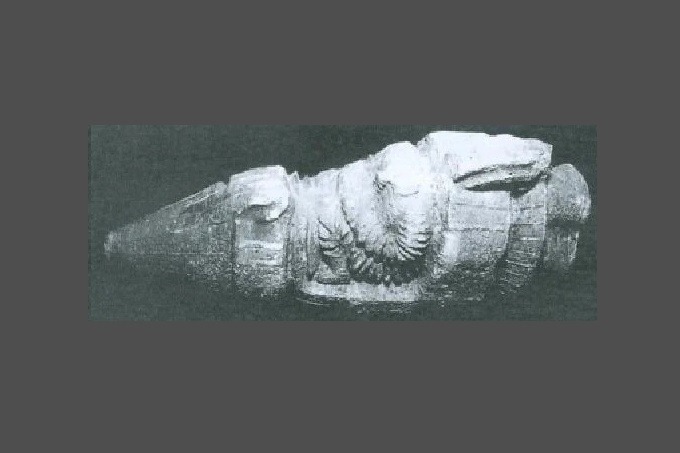An ancient artifact found in Toprakkale, which resembles a modern spaceship, may signify the presence of aliens’ spaceship to our ancestors. Nevertheless, archaeologists find more and more ancient artifacts every year, causing a lot of wonder and questions. Today, we will talk about one such artifact completely randomly discovered in Turkey.
There were many ancient civilizations on our planet, and we do not know exactly what level of technological development our distant ancestors could have reached. Official science is convinced that technological progress on our planet is exclusively incremental and tries to convince us that before us there were no highly developed civilizations that could surpass humanity in technological development.
“Shuttle” Toprakkale is one of the most famous artifacts, which as if proves the fact of the ancient arrival of aliens on Earth. It was first noticed by the famous ufologist Zechariah Sitchin, who discovered it in a museum in Istanbul (Turkey).
At the same time, this artifact was not exhibited in the halls and was kept in the vaults because museum workers doubted its authenticity, it was too unusual.
In addition, they were not able to produce a date for this object for some reason. This carved stone figurine is incredibly reminiscent of a rocket with modern engines, in which sits a man in a spacesuit. That is why it was called the “shuttle”.
Sitchin managed to find out that the artifact was found in a place called Toprakkale, not far from Lake Van. And this place is unusual in itself.
In the 9th century BC, the city of Tushpa, the capital of the state of Urartu, was situated here. From this city, only the remains of the old fortress on the rock of Van survived to this day. The lower walls at the foot of this rock were made with so-called cyclopean masonry, that is, using huge carved stone blocks and without mortar.
The stones were simply fitted together very carefully. This method of construction was considered legendary in Ancient Greece and was attributed to the giant Cyclopes. Cyclopean masonry can be seen in Machu Picchu, Peru, and other pre-Columbian civilizations.
Tushpa stones were of limestone, reached 0.75 meters in height and 6 meters in length, and weighed 30-40 tons. An inscription of the Urartian king Sarduri I (reigned 844-828 BC) was found on just one such huge block. The inscription lists Sarduri’s titles and ends with the phrase “I am Sarduri, son of Lutipri: I brought these stones from the city of Alniunu and erected this wall.”
It is interesting that such inscriptions usually tell about the conquests and victories, it would seem, why leave them when building an ordinary fortress wall? It is possible that this was indeed an unusual and very important construction.
Is it a coincidence that a strange artifact in the form of a spaceship was found in such an extraordinary place? According to Zechariah Sitchin’s version, the figure is a copy or model of what looks very much like a space shuttle with both nose and back, and the clothes of its passenger do not at all resemble the outfits of the ancient inhabitants of Urartu.
Two cone-shaped engines can be seen behind it, with lines carefully drawn on the figurine, including the folds on the man’s suit. The unknown artist tried very hard to convey the resemblance.
Only a few photos of this artifact can be found online, and, alas, it is not known how or where these photos came from, whether from Sitchin’s books or from someone else.
